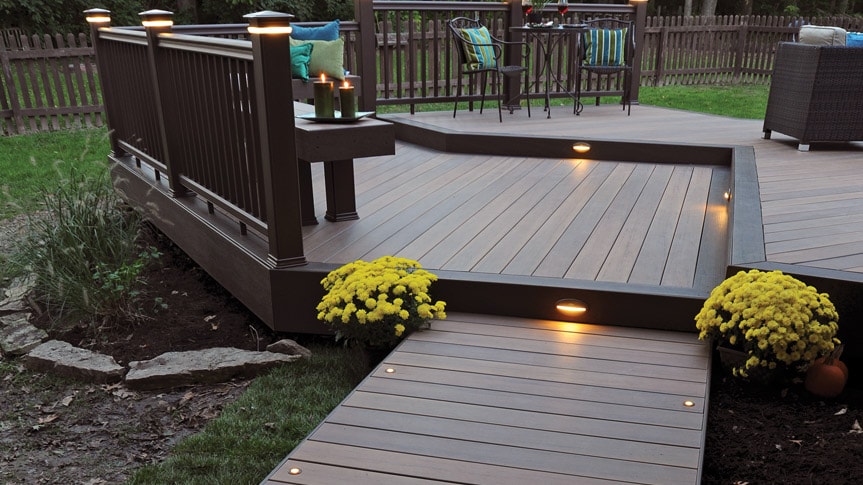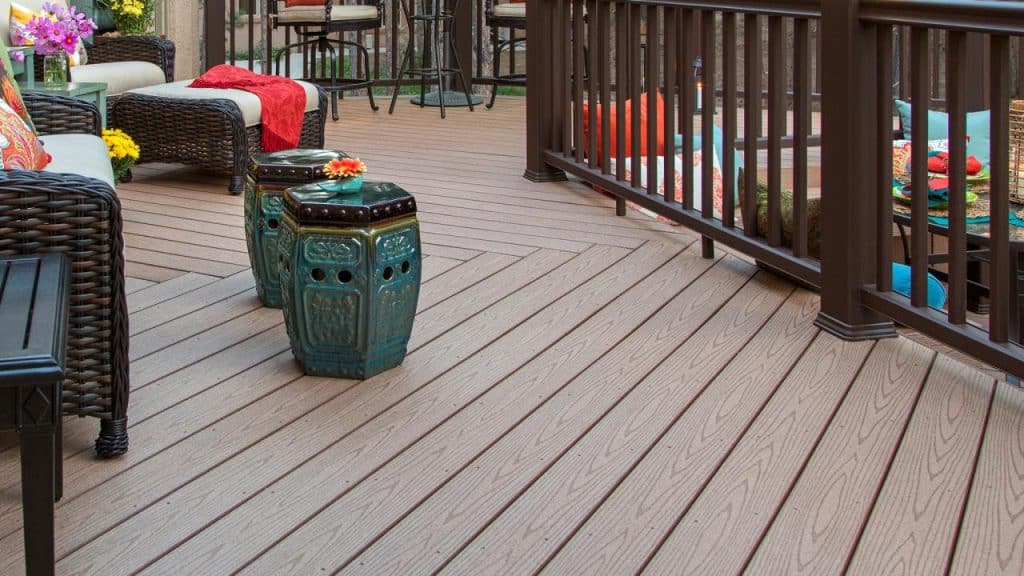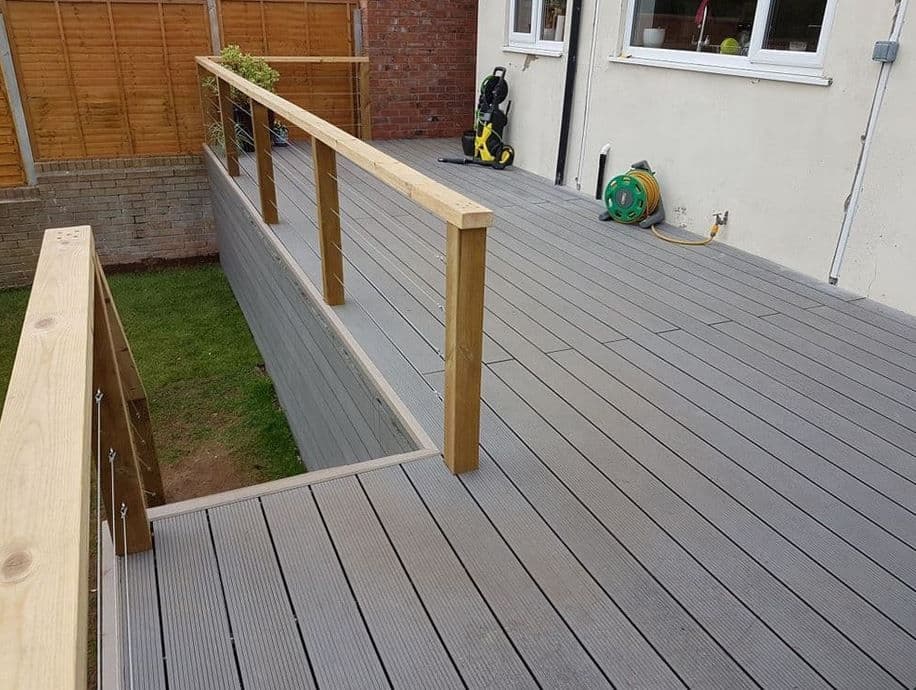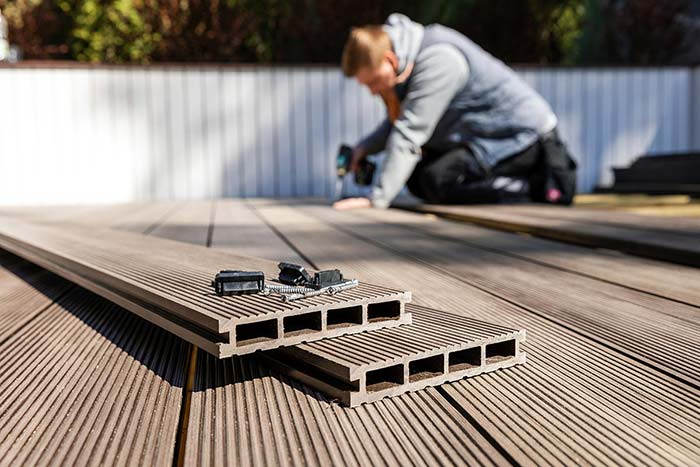Eco-Friendly & Cost-Effective: The Benefits of Sustainable Composite Decking
We’re all for building a beautiful deck to enjoy those summer BBQs or simply to sit back and soak up the sun. Traditional wooden decks can be a hassle. They require constant maintenance, and there’s always that looming threat of rot, warping, or insect damage.
That’s why we’re big fans of sustainable composite decking. It’s a game-changer in the decking world, offering the beauty of wood without the headaches. Plus, it’s an eco-friendly choice we can all feel good about.
The Composition of Composite Decking

Diving deeper into composite decking, we uncover what it’s composed of and why its components make it stand out from traditional, pure wood decking. Intriguingly, composite decking uses recycled materials, granting it the status of being an eco-friendly alternative.
Recycled Materials in Composite Decking

Composite decking combines two key materials: wood fibers and recycled plastics. Both grant the decking its unique characteristics.
Wood Fibers
Wood fibers in composite decking usually come from waste products like sawdust, chips, and wood plant fibers. These fibers get repurposed, thereby preventing needless waste.
Making use of wood fibers has a couple of advantages. Firstly, they offer a natural look and feel close to traditional wooden decking. Secondly, contrary to wooden decks, these fibers, once integrated into the composite, resist the common problems of rotting, warping, and insect damage.
Recycled Plastics
The other significant material utilized in composite decking is recycled plastics. Sources include shopping bags, milk jugs, and plastic wrappers – materials that, without recycling, often end up littered around our planet.
By consolidating recycled plastics into the decking, we give these materials a second life. Just like the wood fibers, these plastics offer a unique set of benefits to the deck.
Primarily, plastics provide a measure of durability that surpasses traditional wood. Composite decks won’t splinter or crack, making them safe for bare feet and hands. Furthermore, plastic is moisture resistance is inherent, providing additional defense against rot and mold issues.
Peruse the table below to briefly compare the properties imparted by wood fibers and recycled plastics in composite decking.
| Material | It gives the decking… |
|---|---|
| Wood Fibers | a natural look, resistance to rotting, warping insects |
| Recycled Plastics | durability, resistance to splintering, cracking, rot, and mold |
With all the above said, it’s clear that composite decking’s composition sets it apart from traditional wooden decks. Moreover, its eco-friendly nature provides the added advantage of helping decrease waste and environmental impact – benefits everyone can appreciate.
Environmental Benefits

Switching to sustainable composite decking from traditional wooden decks allows us to reap many ecological benefits. Let’s explore how it’s contributing to a greener footprint.
Reducing Waste and Pollution
Switching to composite decking helps significantly decrease waste while indirectly reducing pollution. How so, you might ask. The composite decking manufacturing process utilizes recycled plastics and wood fibers. These materials, often a byproduct of plastic production and log milling, would otherwise find their way into landfills.
Conserving Natural Resources
Composite decks consume fewer trees than traditional wooden decks, contributing to the conservation of forested lands. Rather than relying on freshly cut wood, composite decks incorporate wood fibers usually procured as byproducts of other timber production processes.
Lowering Carbon Footprint

Production of composite decking also contributes to a lower carbon footprint. Factories producing composite decking often use eco-friendly processes, reducing harmful emissions released into the atmosphere. They also contribute to the recycling chain by processing disposed plastics that might otherwise end up in nature, causing harm to wildlife and ecosystems.
In adopting sustainable composite decking, not only do we embrace a hassle-free, low-maintenance alternative, but we also contribute to a greener future. Choosing sustainable materials for our outdoor spaces might feel like a small step, but it’s undeniably one step in the right direction for Mother Earth. You can hire the most reliable decking providers like Woodevo for Composite decking in Sydney.
| Impact | Sustainable Composite Decks | Traditional Wooden Decks |
|---|---|---|
| Waste Production | Low (through the use of recycled material) | High |
| Resource Consumption | Less (fewer trees cut) | More |
| Carbon Footprint | Reduced (through eco-friendly manufacturing processes) | Higher |
Durability and Longevity

Embracing sustainable composite decking offers compelling benefits for durability and the longevity of outdoor spaces. Enriched resilience to various natural elements makes this modern innovation a reliable investment in outdoor living spaces.
Maintenance Requirements
Sustainable composite decks are remarkably low in maintenance compared to their timber counterparts. A simple occasional wash ensures their sparkle. Unlike wooden decks, there’s no need for staining, sanding, or painting, sparing homeowners the hassle and costs of regular maintenance.
A survey by Consumer Reports found that over 20 years, homeowners can save up to $3,000 – $5,000 in maintenance costs with composite decks compared to the high upkeep required for wooden ones!
| Material | Estimated Savings in Maintenance (Over 20 Years) |
|---|---|
| Wood | $0 |
| Composite | $3,000 – $5,000 |
Composite decking’s strength and impressive resistance to weather and insects contribute to its superior durability and advantages over traditional decking materials. Remember, the money composite decks can save us in the long run! Who wouldn’t want to embrace such a sustainable, durable, and cost-effective solution for their outdoor spaces? Little to no maintenance, reduced waste, lower carbon footprint – we say yes! To sum the features up, composite decks truly are the way to greener, more enjoyable outdoor living.
Conclusion
So, we’ve seen how sustainable composite decking truly stands out. It’s not just a green choice but also a smart one. The long-term savings and durability it offers are hard to overlook. It’s a win-win situation – we enjoy outdoor spaces without worrying about hefty maintenance costs or environmental impact. Plus, it can even boost our property’s value.
Switching to composite decking is a decision we’ll never regret. It’s an investment in our homes and our planet. Let’s embrace this sustainable solution and enjoy its benefits to our outdoor living spaces. After all, who says we can’t have a beautiful deck and a clean conscience simultaneously?







